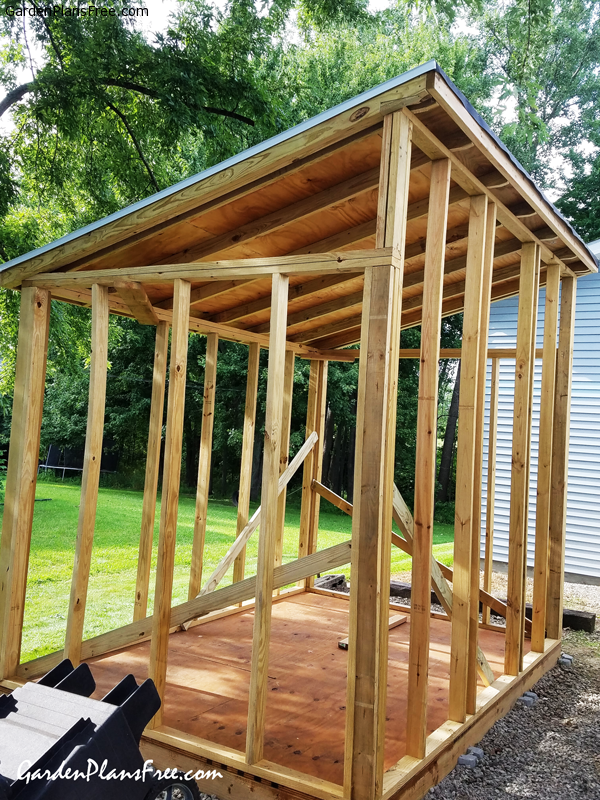Sunday, November 10, 2024
How to build a lean-to shed that blends with your home

Alright, so you want a lean-to shed, but you don't want it to look like a clunky afterthought stuck onto your house. You want it to blend in, right? I get it, you want that seamless, "this was always meant to be here" look. Let's make it happen.
First things first, forget the generic shed look. Think about your home's style. Is it a charming cottage with stone accents? A sleek modern ranch? Maybe a stately Victorian with intricate details? The shed's gotta play nice with the vibe.
## Matching the Style:
Traditional Homes: Imagine a classic farmhouse or Cape Cod. They're all about warm, inviting details. For a shed, think a gable roof with a small overhang, maybe even some exposed beams. Use wood siding in a color that complements your home's trim. If your house has stone accents, consider adding a few stone details to the shed's foundation or siding.
Modern Homes: Clean lines and simple shapes are key. A flat roof with a minimal overhang will fit right in. Consider using modern materials like metal siding, composite decking, and large windows for a clean and contemporary look.
Rustic Homes: This is your chance to go wild! A shed with a rustic aesthetic can be a beautiful addition. Think about using reclaimed wood for siding, a metal roof, or even adding a natural stone foundation. For a touch of whimsy, use vines to climb up the walls or let some wild flowers grow around the base.
## Color Palette:
Don't just slap on any color. Think about the overall color scheme of your home.
Matching the Trim: If your house has white trim, go for a white shed. It'll practically disappear, creating a seamless look.
Complementary Colors: Want something bolder? Choose a color that complements the main color of your house. A blue house? Consider a green shed. A yellow house? Maybe a grey shed.
Darker Colors: Darker shades can make a shed look smaller, so they're a good option if you have limited space. Just make sure the darker color works well with the rest of your home's exterior.
## Materials Matter:
Choosing the right materials can make or break your shed's integration.
Wood Siding: It's classic, affordable, and can be painted to match your home's style.
Metal Siding: Modern and low-maintenance, metal siding comes in various colors and finishes to match your aesthetic.
Stone or Brick: This adds a touch of elegance and creates a strong visual connection with your home, especially if it has stone or brick accents.
Roofing: Choose roofing that complements your home's roof. If your house has asphalt shingles, go for asphalt shingles on the shed. If it has a metal roof, consider a matching metal roof for the shed.
## Windows and Doors:
These details add character and help integrate your shed into your home's style.
Matching Windows: Using similar window styles, sizes, and grids as your home's windows creates a cohesive look.
Doors: Choose a door style that complements your home's main entrance. A solid door with a classic design will blend seamlessly with a traditional home, while a modern sliding door would work well for a contemporary one.
## Don't Forget the Details:
These small touches can make a big difference in your shed's overall look:
Lighting: Don't forget to add lighting! Choose outdoor lighting fixtures that match the style of your home.
Landscaping: Planting flowers or shrubs around the base of the shed can help it blend in with the landscaping.
Pathways: Create a pathway leading from your home to the shed, using materials that match your home's walkways.
## The Little Things Make a Difference:
Remember, blending your lean-to shed with your home is all about creating a cohesive look. Think about these details:
Positioning: Place the shed strategically to make it feel like a natural part of your home. A side or back corner, perhaps?
Gutter System: A matching gutter system ensures rain water flows seamlessly away from your home and the shed.
Foundation: Match the foundation style of your home. If your home has a brick foundation, use brick for the shed's foundation.
## Planning Your Lean-to Shed:
Now that you've got the look figured out, let's talk about the practicalities:
Size: Determine the right size for your needs. It's better to err on the larger side, especially if you plan to use the shed for storage.
Foundation: Consider a concrete slab for a sturdy and level foundation.
Framing: Use treated lumber for the framing to prevent rot and ensure durability.
Building Codes: Check local building codes to ensure you're in compliance.
## Building Your Lean-to Shed:
You can tackle this project yourself if you're handy. But if you're not sure about DIY, consider hiring a contractor. They'll have the experience to ensure your shed is built correctly and blends seamlessly with your home.
## A Final Word:
Remember, a well-integrated lean-to shed enhances your home's curb appeal and adds valuable storage space. So, take your time, consider your home's style, and plan carefully. With a little effort, you can create a shed that looks like it's always been there, adding beauty and function to your property.
No comments:
Post a Comment
Note: Only a member of this blog may post a comment.